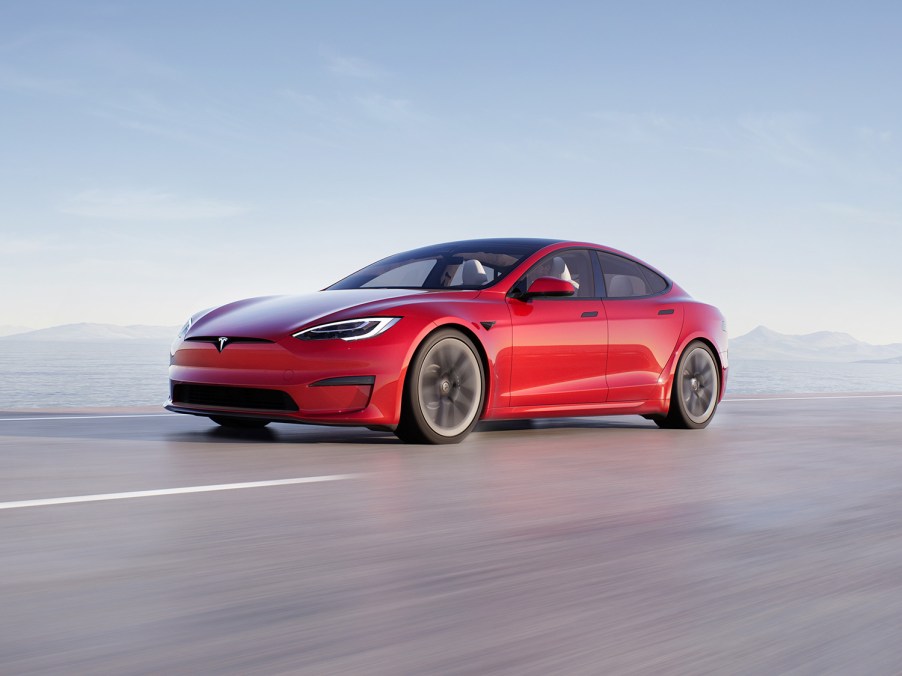
“Modified” Model S Plaid Beats Taycan on Track, Controversy Ensues
Nobody doubts that the Tesla Model S Plaid is fast. With 1,000 horsepower and a two-second zero to 60 mile per hour time, there’s no arguing that it is. However, outside of straight lines, it’s quite impressive on track. Recently, a Model S Plaid took the EV record at Virginia International Raceway. However, there’s a bit of a controversy surrounding the record.
Technicalities and rules are causing quite a stir for this Plaid

Car and Driver initially reported that this Tesla Model S Plaid took the stock EV record at Virginia International Raceway. On March 15th, Car and Driver held a track day at VIR. They allow anyone to bring their car out and have a go at the Grand Course configuration, which is the same configuration they use for their Lightning Lap times. Carmine Cupani, the owner of the Model S Plaid in question, enlisted his friend, Johan Schwartz, to drive the lap. Schwartz is a professional driver and makes even the sketchiest parts of the lap look like a non-issue.
The result was the Plaid beating Car and Driver’s Lightning Lap time for the Porsche Taycan Turbo S by over 4.5-seconds. C&D report that they’re impressed, especially considering they had attempted to Lightning Lap a Model S P85D, and it died before completing a lap. However, C&D changed their article about the lap to clarify that Cupani had modified his Model S Plaid. Therefore, it is not directly comparable to their time in the Taycan Turbo S. This is where the trouble starts.
Cupani took to his Youtube channel comments, declaring that Car and Driver writes fake articles and suggesting Porsche pressured them to change the article.
“Car and Driver writes fake articles and changes the rules as they go. This Tesla had front carbon ceramics that are over one inch smaller than what tesla offers and only on the front. Now they are calling it modified because of apparent pressure from Porsche whiner NA and their little boy comment section,” wrote Cupani.
He went on to link to the rules for VIR Time Attack Classes for stock vehicles as dictated by Kaizen Autosport, VIR’s racing school and co-host of the event.
Is Car and Driver in the wrong for updating the article?
Cupani changed the front brakes to a ceramic kit from Unplugged Performance, according to his video’s description. Despite his persistent argument that the brakes are smaller than stock, they are obviously an upgrade. There’d be no reason for them to exist if they weren’t.
Reading through the rules that he linked, there is not a single mention about brakes. Additionally, it seems that the common theme is that the only aftermarket parts allowed are steering wheels, racing seats, and body components aside from doors.
It seems, above all else, that the brakes are a grey area in the rules. However, one might assume that anything that isn’t explicitly allowed by the rules would default to the first rule. That rule states that the vehicle’s chassis must be stock. To play devil’s advocate, though, the rules allow for modified suspension and non-stock tires. So, it’s a toss-up to decide who is in the right or wrong on this one.
At any rate, seeing a primarily unmodified Tesla Model S Plaid run a dominant lap on a road course with stock tires, suspension, and even the dreaded steering yoke is incredible to see. It certainly helps revoke the stigma that the Model S Plaid is strictly a straight-line car. All of that time spent on the Nurburgring during development certainly paid off!



